Essential Fishing Tackle for Beginners: Comprehensive Guide
Fishing is an enjoyable and relaxing pastime that people of all ages can enjoy. However, for beginners, the vast array of fishing tackle available can be overwhelming. Choosing the right tackle is crucial for a successful and enjoyable fishing experience. In this article, we will provide an overview of essential fishing tackle for beginners and discuss the factors to consider when selecting each item.
Fishing Tackle for Beginners: A Quick Overview (Key Takeaways)
| Tackle/Accessory | Key Takeaways |
|---|---|
| Fishing Rod | Medium power, 7-foot spinning rod with a moderate action |
| Fishing Reel | 2000-3000 series spinning reel with a 5:1 gear ratio |
| Fishing Line | 6-12 pound test monofilament line in a clear or low-visibility color |
| Hooks | Selection of J-hooks, circle hooks, and treble hooks in various sizes |
| Sinkers | Assorted split shot, egg, and pyramid sinkers in different sizes |
| Swivels | Barrel and snap swivels in assorted sizes |
| Lures | Variety of soft plastics, hard baits, spinnerbaits, and jigs |
| Baits | Combination of live or cut baits and artificial baits |
| Tackle Box | Adjustable compartments for organizing and storing gear |
| Fishing Pliers | Corrosion-resistant material for cutting line, removing hooks, and crimping sinkers |
| Line Cutter | Serrated blades for efficient line cutting |
| Hook Remover | Appropriate type for preferred fishing techniques and target species |
| Measuring Tape | For determining fish size and ensuring compliance with regulations |
| Scale | To accurately weigh catches |
| Fishing Net | Rubber or coated mesh for safe fish landing |
| Sunglasses | Polarized lenses for reduced glare and UV protection |
| Sunscreen | Broad-spectrum, water-resistant, SPF 30 or higher |
| Hat | Additional sun protection for face, ears, and neck |
Basic Fishing Tackle: Rods, Reels, and Lines

Fishing Rods: Finding the Perfect Fit
Fishing rods are an essential part of any angler’s arsenal. There are several types of fishing rods, each designed for specific techniques and environments:
- Spinning rods: Ideal for beginners, spinning rods are versatile and easy to use. They are suitable for various fishing techniques and can handle a wide range of fish species.
- Casting rods: Designed for more experienced anglers, casting rods offer greater accuracy and control when casting. However, they can be challenging to master and are best suited for those with some experience.
- Fly fishing rods: Specifically designed for fly fishing, these rods are lightweight and flexible, allowing for precise casting of lightweight flies. Fly fishing is a specialized technique that requires practice and skill.
When choosing a fishing rod, consider the following factors:
- Length: Rod length affects casting distance and accuracy. Shorter rods (around 6 feet) are suitable for small streams and ponds, while longer rods (8 feet and up) are better for large bodies of water.
- Power: This refers to the rod’s resistance to bending. Light power rods are suitable for small fish, while heavy power rods are designed for larger fish.
- Action: Action describes how quickly the rod returns to its straight form after bending. Fast action rods are sensitive and best for single-hook lures, while slow action rods are more flexible and ideal for multi-hook lures.
For beginners, a medium power, 7-foot spinning rod with a moderate action is a versatile and user-friendly option. You can read more here about how to choose the perfect fishing rod.
Fishing Reels: The Right Match for Your Rod

Fishing reels are designed to hold, release, and retrieve fishing line. There are three main types of fishing reels:
- Spinning reels: Easy to use and versatile, spinning reels are perfect for beginners. They are best suited for lighter lines and lures.
- Baitcasting reels: Offering greater control and accuracy, baitcasting reels are used by more experienced anglers. They have a steeper learning curve and are best for heavier lines and lures.
- Fly fishing reels: Designed specifically for fly fishing, these reels are lightweight and balance well with fly rods.
When choosing a fishing reel, consider the following factors:
- Gear ratio: This refers to the number of times the spool rotates with each turn of the handle. A higher gear ratio retrieves the line more quickly. For beginners, a gear ratio of around 5:1 is a good starting point.
- Ball bearings: The number of ball bearings in a reel affects its smoothness and durability. Look for a reel with at least four ball bearings.
- Reel size: Match the reel size to the rod and line weight. A 2000-3000 series reel is suitable for most beginner setups.
For beginners, a spinning reel in the 2000-3000 series with a gear ratio of 5:1 is recommended.
Fishing Line: Strength, Diameter, and Visibility
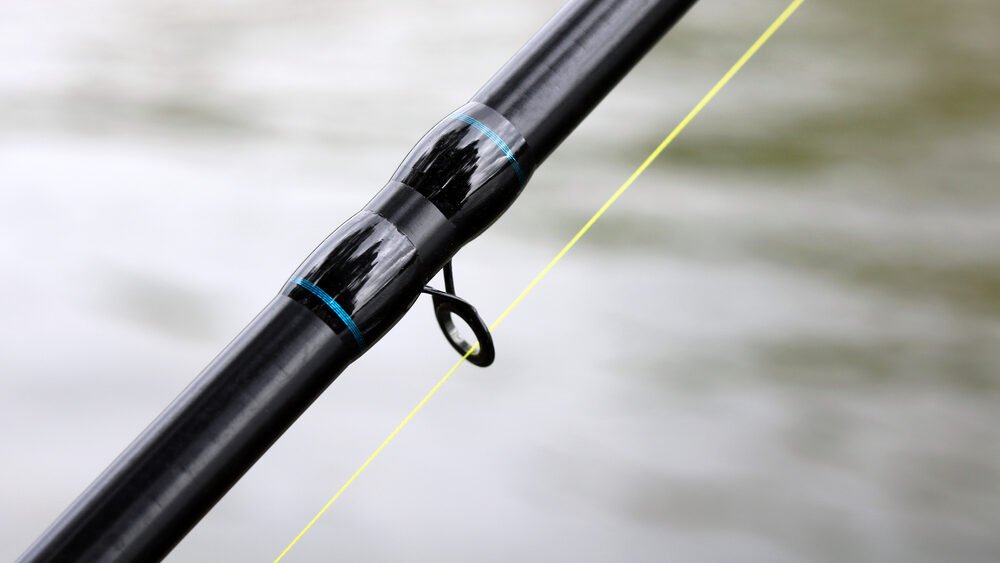
Fishing line connects the angler to the fish and is a critical component of any fishing setup. There are three main types of fishing line:
- Monofilament: Affordable and versatile, monofilament is the most popular choice for beginners. It is easy to handle and has good knot strength, but stretches more than other lines.
- Fluorocarbon: With low visibility and high sensitivity, fluorocarbon lines are excellent for clear water and finicky fish. However, they can be more difficult to handle and are less abrasion-resistant than other lines.
- Braided: Offering high strength and minimal stretch, braided lines are ideal for heavy cover and long casts. However, they are more visible in the water and require special knots.
When choosing a fishing line, consider the following factors:
- Strength: The line strength, or pound test, should match the target fish species and fishing environment. For beginners, a 6-12 pound test monofilament line is a versatile choice.
- Diameter: Thinner lines are less visible to fish but are more prone to breaking. Choose a diameter that provides a balance between visibility and strength.
- Visibility: Consider the water clarity and target species when selecting line color. Clear lines are suitable for most conditions, while colored lines can be useful in murky water or for specific techniques.
For beginners, a 6-12 pound test monofilament line in a clear or low-visibility color is recommended.
Hook, Line, and Sinker: Fishing Hooks, Sinkers, and Swivels
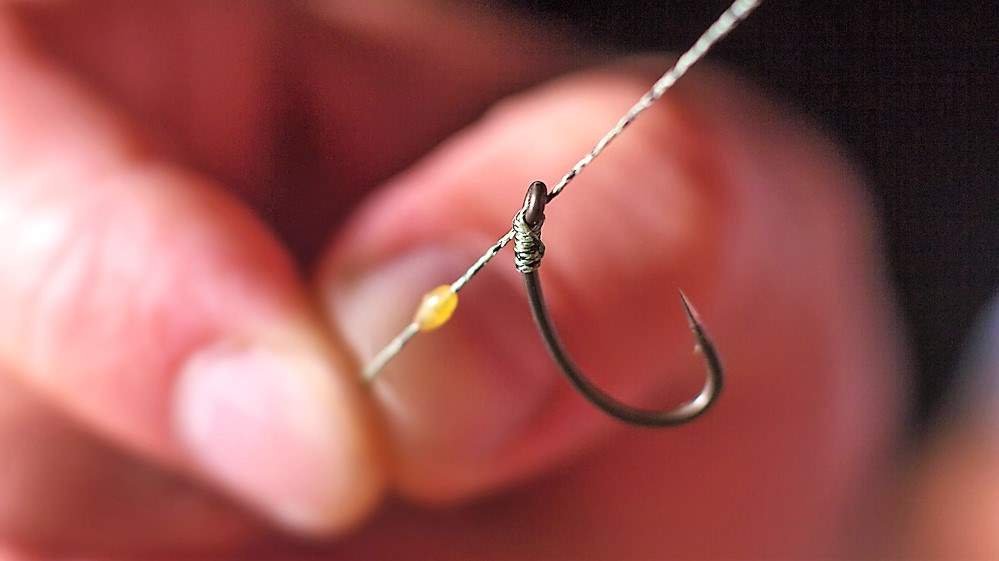
Fishing Hooks: The Key to Catching Fish
Fishing hooks are an essential component of any fishing tackle setup. There are several types of fishing hooks, each designed for specific techniques and species:
- J-hooks: The most common type, J-hooks are versatile and suitable for various fishing techniques. They require a strong hookset to ensure a secure connection to the fish.
- Circle hooks: Designed to hook the fish in the corner of the mouth, circle hooks reduce the risk of gut-hooking and are ideal for catch-and-release fishing. They do not require a strong hookset.
- Treble hooks: Comprising three hooks connected at the shank, treble hooks offer a higher hookup rate but can cause more damage to the fish.
When choosing fishing hooks, consider the following factors:
- Size: Hooks come in various sizes, typically ranging from 32 (smallest) to 19/0 (largest). Match the hook size to the target fish species and the bait or lure being used.
- Material: Most hooks are made from high-carbon steel or stainless steel, with various coatings such as nickel, tin, or gold. Choose a material and coating that offers strength, corrosion resistance, and minimal visibility in the water.
- Hook type: Select the appropriate hook type for the fishing technique, bait or lure, and target species.
For beginners, a selection of J-hooks in sizes 4 to 4/0, circle hooks in sizes 2 to 3/0, and treble hooks in sizes 6 to 2/0 is a good starting point.
Sinkers: Adding Weight to Your Line
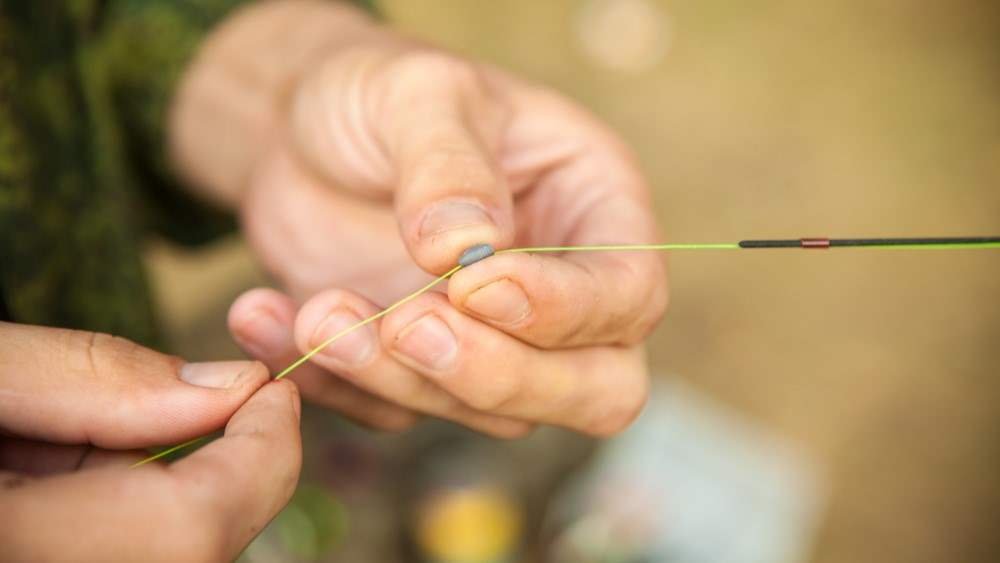
Sinkers are used to add weight to your fishing line, helping to cast further and keep the bait or lure at a desired depth. There are several types of sinkers:
- Split shot: Small, round weights that can be easily pinched onto the line, split shot sinkers are versatile and suitable for various techniques.
- Egg sinkers: Shaped like an egg with a hole through the center, egg sinkers allow the line to pass through smoothly, providing a more natural presentation of the bait.
- Pyramid sinkers: Designed for surf fishing, pyramid sinkers have a flat, triangular shape that digs into the sand to hold the bait in place.
When choosing sinkers, consider the following factors:
- Weight: The weight of the sinker should match the fishing environment, target species, and angler’s skill level. Beginners should start with a variety of sinkers ranging from 1/8 to 1 ounce.
- Shape: Select the appropriate sinker shape for the fishing technique and environment.
- Material: Sinkers are typically made from lead, steel, or tungsten. Due to environmental concerns, many anglers are now choosing non-toxic alternatives such as steel or tungsten.
For beginners, a variety of split shot, egg, and pyramid sinkers in assorted sizes is recommended.
Swivels: Preventing Line Twist
Swivels are small devices that connect the main fishing line to the leader, allowing the line to rotate without twisting. There are several types of swivels:
- Barrel swivels: The most common type, barrel swivels consist of a central barrel with a ring on each end. They are suitable for various fishing techniques.
- Snap swivels: Featuring a snap on one end, snap swivels allow for easy attachment and removal of lures or leaders. However, they can be more visible to fish.
- Ball bearing swivels: Designed for heavy-duty applications, ball bearing swivels provide the smoothest rotation and are ideal for trolling or when using heavy lures.
When choosing swivels, consider the following factors:
- Size: Match the swivel size to the line strength and target fish species. Beginners should start with a variety of swivels ranging from size 10 to size 2.
- Strength: Ensure the swivel’s strength is adequate for the target fish species and fishing environment.
- Material: Choose a swivel material that offers strength, durability, and corrosion resistance, such as brass or stainless steel.
For beginners, a selection of barrel and snap swivels in assorted sizes is recommended.
Luring Them In: Fishing Lures and Baits
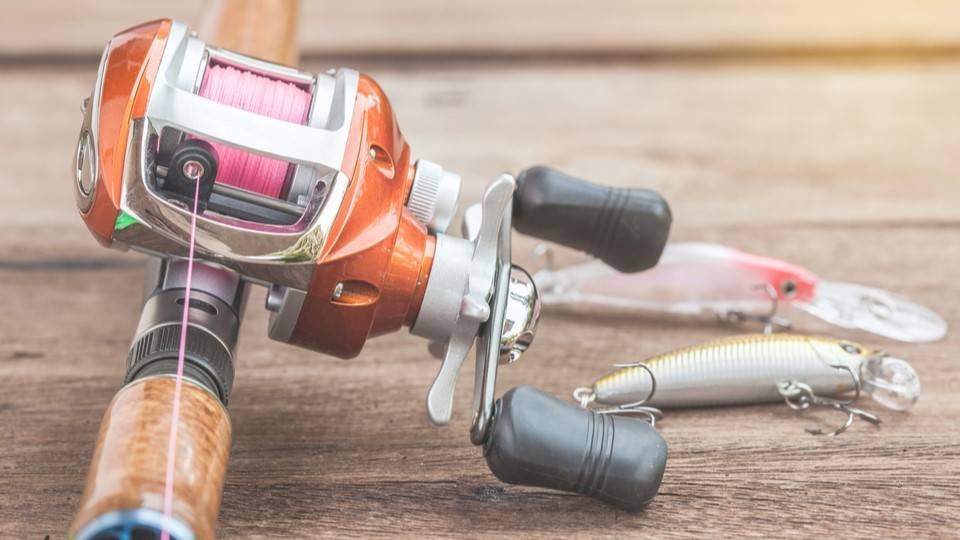
Fishing Lures: Artificial Attraction
Fishing lures are designed to mimic the appearance and movement of prey, enticing fish to strike. There are several types of fishing lures:
- Soft plastics: Made from soft, pliable materials, soft plastics imitate the texture and movement of live bait. They are versatile and can be used in various fishing techniques.
- Hard baits: Including crankbaits, jerkbaits, and topwater lures, hard baits are made from wood or plastic and provide a range of actions and dive depths.
- Spinnerbaits: Featuring a spinning blade and a skirted body, spinnerbaits create vibration and flash to attract fish.
- Jigs: Combining a weighted head with a skirt or soft plastic body, jigs can be bounced or dragged along the bottom to entice strikes.
When choosing fishing lures, consider the following factors:
- Target species: Select lures that match the size, shape, and color of the prey preferred by the target fish species.
- Water conditions: Adjust lure size, color, and action based on water clarity, temperature, and depth.
- Time of day: Fish are often more active during low light conditions, such as dawn and dusk. Choose lures with increased visibility and vibration during these times.
For beginners, a selection of soft plastics, hard baits, spinnerbaits, and jigs in various sizes and colors is recommended.
Fishing Baits: Natural or Artificial?
Fishing baits can be live, cut, or artificial, each offering advantages and limitations:
- Live baits: Including worms, minnows, and insects, live baits provide a natural presentation and are highly effective for various fish species. However, they require special care and handling.
- Cut baits: Consisting of pieces of fish or other animals, cut baits are effective for attracting predatory fish through scent and taste. They are easier to handle than live baits but can be less durable.
- Artificial baits: Made from synthetic materials, artificial baits such as scented soft plastics or bait sprays provide the benefits of natural bait without the need for live or cut bait. They are durable and easy to store but may be less effective in some situations.
When choosing fishing baits, consider the following factors:
- Target species: Match the bait type and size to the preferences of the target fish species.
- Local regulations: Be aware of any local regulations regarding the use of live or cut baits.
- Availability: Choose baits that are readily available and easy to store, especially for beginners.
For beginners, a combination of live or cut baits and artificial baits is recommended, allowing for experimentation with different techniques and target species.
10 Essential Fishing Accessories: Tools for Success
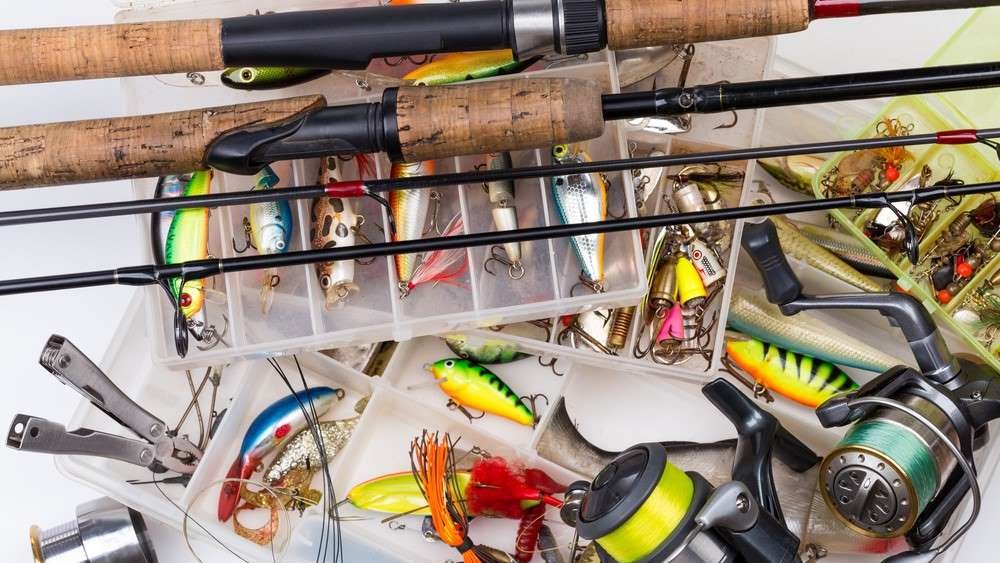
While rods, reels, hooks, sinkers, swivels, lures, and baits are vital components of a beginner’s fishing tackle, there are several additional accessories that can make the fishing experience more enjoyable and efficient:
1. Tackle box
A tackle box helps organize and store your fishing gear, making it easy to transport and access during your fishing trips. Choose a tackle box with adjustable compartments to accommodate various types of tackle.
2. Fishing pliers
Fishing pliers are a versatile tool, used for tasks such as cutting line, removing hooks, and crimping split shot sinkers. Choose a pair of pliers made from corrosion-resistant materials, such as stainless steel or aluminum.
3. Line cutter
A dedicated line cutter or a pair of line scissors is essential for cutting fishing line cleanly and efficiently. Look for a cutter with serrated blades for increased cutting power.
4. Hook remover
A hook remover, also known as a dehooker or a disgorger, simplifies the process of unhooking a fish, minimizing harm to the fish and reducing the risk of injury to the angler. There are various types of hook removers, so choose one that aligns with your preferred fishing techniques and target species.
5. Measuring tape
A measuring tape is useful for determining the size of your catch, ensuring compliance with any size regulations and helping to document your fishing achievements.
6. Scale
A fishing scale allows you to weigh your catch accurately, providing valuable information about the fish and aiding in trophy documentation or catch-and-release decision-making.
7. Fishing net
A fishing net makes landing fish easier and safer, reducing the risk of losing a fish at the boat or shoreline. Choose a net with a rubber or coated mesh to minimize harm to the fish.
8. Polarized sunglasses
Polarized sunglasses reduce glare on the water’s surface, enhancing visibility and reducing eye strain. They also provide essential protection for your eyes from harmful UV rays.
9. Sunscreen
Sunscreen is crucial for protecting your skin from sunburn and long-term damage caused by UV rays. Choose a broad-spectrum, water-resistant sunscreen with an SPF of at least 30.
10. Hat
A hat provides additional sun protection for your face, ears, and neck, keeping you comfortable during long days on the water.
Putting It All Together: Assembling Your Beginner Fishing Tackle Setup

Now that you’re familiar with the essential components of a beginner’s fishing tackle, it’s time to assemble your gear:
- Attach the reel to the rod, ensuring the reel seat is secure and properly aligned.
- Thread the fishing line through the rod guides and onto the reel, tying an arbor knot to secure the line to the reel spool.
- Fill the reel with the appropriate amount of fishing line, taking care not to overfill the spool.
- Assemble your terminal tackle, including hooks, sinkers, swivels, and lures or bait, based on your target species and fishing environment.
- Store all fishing gear and accessories in your tackle box, organizing items in a way that is easily accessible and efficient during your fishing trips.
Remember to maintain and store your fishing tackle properly to ensure its longevity. Clean and dry your gear after each use, lubricate moving parts as needed, and store items in a cool, dry place.
Fishing is a rewarding and exciting hobby that can be enjoyed by people of all ages and skill levels. By selecting the best fishing pole for beginners, the right tackle and accessories, beginners can set themselves up for success and create lasting memories on the water. Don’t be afraid to experiment with new techniques, learn from experienced anglers, and enjoy the journey of becoming a skilled angler.
Conclusion: Embarking on Your Fishing Adventure

In summary, equipping yourself with the essential fishing tackle and accessories will set the foundation for a successful and enjoyable fishing experience. As a beginner, focusing on versatile and user-friendly gear will allow you to learn and adapt to various fishing techniques and environments.
To recap, here are the essential fishing tackle and accessories for beginners:
- A medium power, 7-foot spinning rod with a moderate action
- A 2000-3000 series spinning reel with a 5:1 gear ratio
- A 6-12 pound test monofilament line in a clear or low-visibility color
- A selection of hooks, sinkers, swivels, lures, and baits suitable for various target species and environments
- A tackle box, fishing pliers, line cutter, hook remover, measuring tape, scale, fishing net, polarized sunglasses, sunscreen, and a hat
As you gain experience and develop your skills, don’t hesitate to explore new tackle options, techniques, and fishing locations. The world of fishing offers endless opportunities for growth, learning, and enjoyment.
Remember that fishing is not just about catching fish; it’s also about connecting with nature, bonding with friends and family, and creating lasting memories. So embrace the journey, celebrate your successes and learn from your challenges, and most importantly, enjoy your time on the water. As you immerse yourself in this rewarding pastime, you’ll discover a lifelong passion and a world of adventure waiting to be explored.
